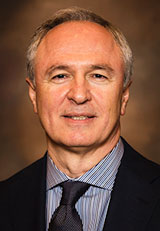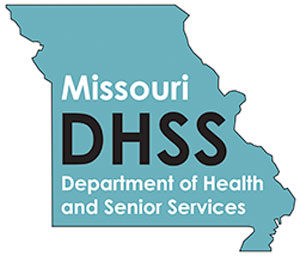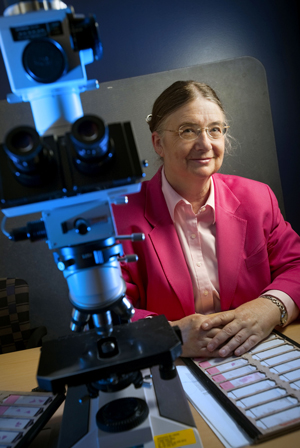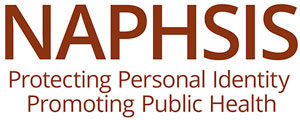Aug 08, 2018
The Death Certificate: A Document to be Honored and Accurate
Related Article
Death
Certificates: A Closer Look at Detail
The death certificate. A simple piece of paper that is never touched by the person whose data it contains. Its author? The hand of a medical provider or other designee, an individual who might be trained in death certification or not. Serving as a strategic key to the decedent's post-mortem business transactions, the death certificate has no substitute document. For families, it can also become the source of intense emotion. The certificate contains data that drive public health policy and public health interventions. In particular, for rural researchers and public health professionals who study rural populations, using death certificate-linked data is sometimes a challenge because of confidentiality issues when looking at large geographic areas with only a few residents.

Shawna Webster is the Executive Director of the National Association for Public Health Statistics and Information Systems (NAPHSIS), a nonprofit professional organization with membership representing individuals in charge of vital records and public health statistics for states, territories, the District of Columbia, and New York City. Webster explains that this organization has two mandates: promoting public health and protecting identity information contained in vital records, the latter she said is especially relevant for rural populations.
"Most of the research being done centers in urban areas," Webster shared. "One of the reasons that researchers shy away from doing rural research is due to the stringent laws around privacy. Once you get to a small population, even if the data doesn't have any personal identifiers, when you look at geographic areas with only 5 people per square mile, it's too easy to identify people. In a statistic world, that's a very dangerous place to be."
Dr. Erika Ziller, Deputy Director of the Maine Rural Health Research Center and one of the Federal Office of Rural Health Policy-funded research centers, experiences the issue Webster outlines. Ziller is currently working on a project that explores rural and urban mortality differences. Ziller said it's a project that highlights the complexity and time required to complete this type of rural research because even though the data set needed for the research is only linked to death certificates and not the death certificate itself, the identity protection issues are similar.

"The application process to get data is more complicated due to confidentiality issues, so it takes a lot more time to get the data," Ziller said. "We really had to think through what data we absolutely needed, what we could do without and how to report it. For example, rather than yearly time frames, we are using three-year time frames because of the small numbers and we'll be using aggregated death data rather than more specific data or yearly data."
Ziller also explained that despite the challenges of using rural data in research, she also knows that the complexities and time commitment for this type of research have an important outcome.
"It's why I transitioned from my career as a social worker in my home area in rural Maine," Ziller said. "I can help drive evidence-based improvements in rural public health by doing this type of research. Specifically, with this project, we believe we'll be providing important information about social determinants of health in rural communities."
Death Certificates: What's So Personal?
So what's on the death certificate that needs to be protected? The death certificate is a standardized document, last updated in 2003. It has three basic sections. Two of these sections, usually completed by the funeral director, contain the identifiers of name, age, sex, and birth data along with occupation and education information. The central section, referred to as the "cause of death" section, is completed by a designated individual — who may or may not have medical training. The certificate itself has several attached "how-to" pages of instructions, guidelines, and examples for completing the cause of death section. To avoid the most common of errors, an instruction is included on the formal certificate itself and reads, "Not acceptable as entries are the phrases 'cardiac arrest,' 'respiratory arrest,' or 'ventricular fibrillation.'" (Experts said these terms can't be used because they are considered medical events and not diagnoses.)
Information on death certificates is required for multiple business transactions, for example: death benefits, life insurance benefits, or real estate deed changes. Sometimes family members even need copies to prove funeral attendance or cancel other formalized plans.
Death certificate information can provide answers for family and friends, especially for those with questions like, "Could I, or should I, have done something to prevent this death?" Experts said it's important to recognize that this information is very personal. For example, for the decedent's family and friends, the certificate's detail may trigger a range of emotions when the cause of death is due to suicide or related to stigmatized health conditions like HIV.
Death Certification Inaccuracies

Researchers said they navigate death certificate data carefully not only because of the personal information, but because of the well-studied issue of provider-associated inaccuracies. Multiple academic papers have quantified error rates of the death certificate's cause of death section when completed by medical providers such as residents and attending physicians. Even patients are familiar with the accuracy issue, especially those living with incurable chronic diseases. John Linnell, a patient with chronic obstructive pulmonary disease (COPD) and a member of the U.S. COPD Coalition's Board of Directors, stepped to the microphone at a 2018 national meeting focused on rural COPD issues to raise concern about the potential impact of inaccuracies. He reminded the audience that COPD patients sometimes die from an acquired condition called pulmonary arterial hypertension often listed as a heart — not a lung — condition on a death certificate. Linnell said he recognized that these types of errors might lead to the underreporting of COPD and have further impact on disease statistics, research findings, and treatment recommendations for COPD patients like himself and others he advocates for.
"I never was very good at statistics, but I know statistics only work if you have accurate information to begin with," Linnell said.

Dr. George Turabelidze, a practicing pediatric hospitalist and Missouri's State Epidemiologist is also concerned about death certificate inaccuracy.
"There are two major events in your life — when you're born and when you die — and you want the records of those events to be accurate," Turabelidze said. "When it comes to public health activities, you can't overestimate the need for accuracy. Misidentifying what is killing people has implications."
Turabelidze is the senior author of a 2017 MMWR study addressing death certificate inaccuracies in selected Missouri metropolitan hospitals. That report, looking at 2009-2012 death certificates, found that slightly more than 45% of certificates' cause of death sections were incorrectly completed.
But Turabelidze said there was also a surprise finding. With a pre-study hypothesis of a certain cause of death being overreported when compared to national benchmarks, they discovered that condition was actually underreported — again, a finding that Turabelidze said has significant public health implications.
"If you have a community of people and, based on death records, you think their major problem is heart disease and it's actually cancer, then you might be directing health resources in the wrong direction," Turabelidze said. "Maybe what's needed for these communities then is better cancer screening services."
Remedies for Rural Inaccuracies
 Noting
that most medical students and residents receive no
training for death certification, Turabelidze translated
the report's findings with respect to rural medical
practitioners. He said that because rural providers train
in similar systems as their urban peers, certification
accuracy might be similar in rural areas, though no study
has compared urban and rural accuracy rates. This logic
also leads to the likelihood that a universal
intervention might help all certifiers in all zip codes,
a process that Missouri now has in place. Missouri
transitioned to using a brief online tutorial, the
MoEVR Training, which provides a review of the
medical decision-making surrounding cause of death,
basics of death certificate completion, and Missouri laws
regarding the process.
Noting
that most medical students and residents receive no
training for death certification, Turabelidze translated
the report's findings with respect to rural medical
practitioners. He said that because rural providers train
in similar systems as their urban peers, certification
accuracy might be similar in rural areas, though no study
has compared urban and rural accuracy rates. This logic
also leads to the likelihood that a universal
intervention might help all certifiers in all zip codes,
a process that Missouri now has in place. Missouri
transitioned to using a brief online tutorial, the
MoEVR Training, which provides a review of the
medical decision-making surrounding cause of death,
basics of death certificate completion, and Missouri laws
regarding the process.
"There are multiple studies that show doctors improve greatly when they are trained," Turabelidze said, adding that Missouri's training is required for not just medical providers, but all Missouri certifiers. "The training is quick. Refresher courses aren't necessarily needed and if training was included in medical schools and residency training, these providers wouldn't have to learn on the job; they'd come already prepared."

Other educators, like Maine family medicine physician, Dr. Christina Holt, agree medical student and resident curricula needs to include death certification training. Holt, a native rural Mainer who practiced family medicine in rural Maine, is now in Portland, having transitioned to academic medicine and clinical research. She previously served her rural Maine community as a medical examiner (ME).
"I first practiced in Belfast, a small town on the coast, with several family medicine providers practicing the full spectrum of primary care, including the medical examiner function," Holt said. "They shared their belief that, as community practitioners, ME work was an important part of community health and wellness. Filling out death certificates allows you to have a concrete idea of what's happening to people, their preventable illnesses, and what's happening to people without doctors."
With the encouragement of her partners, Holt took several continuing education courses geared to medical examiner work since she'd had no training in even the basics of completing a death certificate when she first began practicing medicine. Now she brings her ME experience and knowledge to medical students and residents at Maine Medical Center. Holt emphasized that though the training curricula to prepare family residents for rural practice includes a long list of "must teach these things," the death certification logic can be easily integrated into daily tasks. With full support of the medical center's leaders, the process is taught using active learning. As a faculty member assisting trainees with quality improvement and research projects, Holt shared that one resident's recent quality improvement project on death certificate inaccuracies became an academic publication.
"Death causation discussions are part of our medical decision-making discussions," Holt said. "And they fit naturally into quality improvement work that uses root-cause analysis."
Additionally, Holt said she is creating an online teaching module she hopes will be helpful for their trainees and for other family medicine training programs across the country.
"Primary care in rural areas will include dealing with death and death certificates," Holt said. "We have to open the door for our residents to first understand the importance of the data on death certificates. They need to understand this is a document that should be honored. Then we need to teach them that accurate completion is possible."
But Missouri's Turabelidze said there is one final point about inaccuracies, a flip side that doesn't receive enough attention.
"Despite the provider-related accuracy issue, there is another important overarching question," Turabelidze said. "We don't really know how errors might distort overall public health data. No studies have been done looking at that. It's very important to raise that question."
Death Certification: Not Just Medical Providers, but the Medicolegal System
| Table 1. Summary List of Professionals Authorized to Sign Death Certificates |
|
| Source: "Certifying Death in the United States," Journal of Forensic Sciences, July 2018. |
When looking at medical providers' certification challenges, experts said it's important to recognize other individuals who sign death certificates. Washington State University's Department of Criminal Justice and Criminology released a July 2018 review that detailed professionals eligible to sign death certificates in all 50 U.S. states and the District of Columbia (Table 1). These designees range from those specially trained, such as medical examiners, to law enforcement individuals, justices of the peace, attorneys, and child fatality review teams.
Looking further into the medicolegal system's impact on death certification, a 2016 report from the National Science and Technology Council noted that of the 2.6 million U.S. deaths per year, 30 to 40% are referred to the system of medical examiners and coroners. The report points out the country has nearly 2,400 of these ME/coroner jurisdictions. Medical examiners in particular have the expertise to complete death certificates accurately. Medical examiner experts said this process actually has additional importance: providing real-time public health information.

Dr. Mary Ann Sens, a forensic pathologist who has provided multiple years of executive leadership for National Association of Medical Examiners (NAME) and is the current Vice President, emphasized that medical examiners like herself understand the power of death certification for identifying emerging public health crises.
"Medical examiners were the first to understand the opiate problem's rural origins," Sens said. "Specifically where I work in North Dakota, early on we began contacting people to alert them of the trend we were seeing. When the drug overdose deaths exceeded traffic fatalities around 2009, that's when other local authorities really started to get involved."
Sens, also Chair of Pathology at University of North Dakota School of Medicine and Health Sciences, said there was another important rural example of early identification and collaborative work.
"When we began seeing significant numbers of suicides in discharged National Guard veterans who'd been deployed, we discussed this with the Armed Services ME [medical examiner] system," Sens said. "They shared they had programs for the Air Force and Army veterans. But, when we emphasized these were rural National Guard veterans who didn't have a base, didn't have a VA hospital, some who didn't even have a mental health provider in their community, there was silence. We rural medical examiners were some of the first to make that connection and I think we made a difference in getting attention for that problem."
 NAPHSIS's
Executive Director Webster pointed out that her
organization's members, the country's professionals who
handle vital records, are also part of the public health
workforce when it comes to early detection using death
certificate information.
NAPHSIS's
Executive Director Webster pointed out that her
organization's members, the country's professionals who
handle vital records, are also part of the public health
workforce when it comes to early detection using death
certificate information.
"A bit like the canary in the coal mine, our members who collect data on vital events are the sentinels that start hearing about and noticing public health issues before anybody else," Webster said, citing examples like the rural disparity with opioid deaths, water issues in Michigan, and maternal mortality issues in Texas.
Though death certificate data have an important early warning function for public health safety, Webster emphasized the data still must be protected. Webster shared that the 85 year-old NAPHSIS organization doesn't just support vital statistics professionals, it also works with government agencies handling this confidential information. Longtime collaborators, these organizations are now working together to bring more functionality to sensitive death certificate data by creating a new community-level measure of health, the United States Small-Area Life Expectancy Estimates Project, or USALEEP.
"We've been working closely with the CDC's National Center for Health Statistics (NCHS) and the Robert Wood Johnson Foundation on this project," Webster said. "The goal of the project was to produce life expectancy estimates at the census tract level, an estimate that uses death certificate data."
Webster explained that the project's estimates, on target to be released in September, provide a summary measure based on several data sources. It includes population estimates from the 2010 census, death certificate data, death numbers and age at death per census tract during the years 2010-2015, and population data from the 2011-2015 American Community Survey. Webster said this is the first nationwide estimation of life expectancy at the census tract level.
"Our project team believes this will be an important complement to other measures of health at the county, state, and national levels," Webster said. "We hope this detail will be especially useful for researchers, public health professionals, and providers working to improve rural health."

